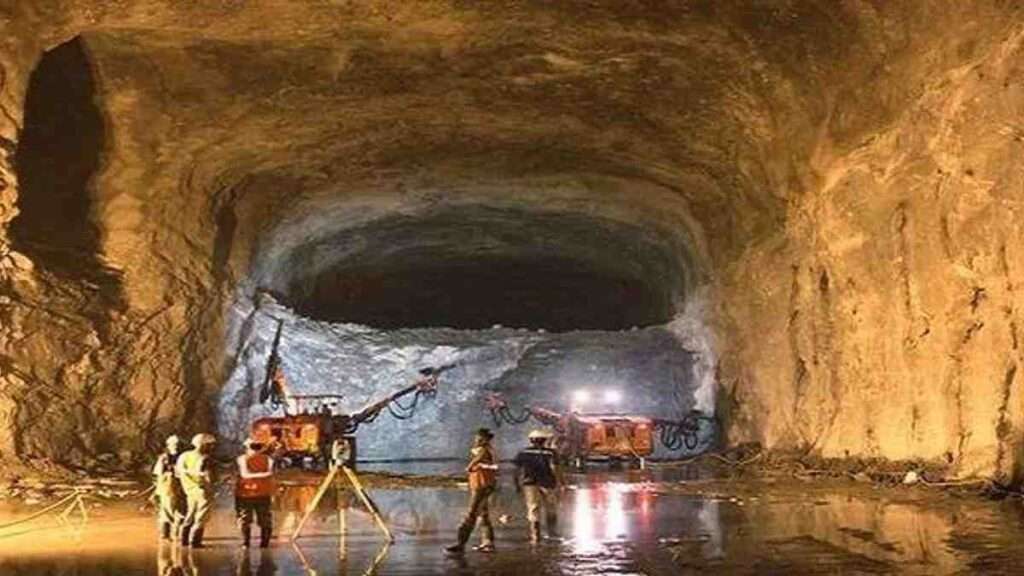With a developing country that increasingly is reliant on imported oil by nearly 85 – 90% of its crude oil needs, India faces sustainability and vulnerability to global disruptions, whether they be from the Russia-Ukraine conflict, tensions in the Middle East or attacks near the Red Sea, any minor geopolitical tremors can influence energy and economic ramifications for India. Now the country has recognized its risk and is moving forward with an expansion of its Strategic Petroleum Reserve (SPR) to increase energy security and price stability.
What is a Strategic Petroleum Reserve (SPR)?
SPR is a petroleum reserve, or stockpile of crude oil, that is stored in underground rock caverns and controlled by the government for the purpose of emergency use. In India, the SPR is controlled by Indian Strategic Petroleum Reserves Limited (ISPRL), under the Ministry of Petroleum and Natural Gas.
Currently, India has three significant SPR locations:
- Visakhapatnam, Andhra Pradesh – 1.3 million metric tonnes (MMT)
- Mangalore, Karnataka – 1.5 million metric tonnes (MMT)
- Padur, Karnataka- 2.5 million metric tonnes (MMT)
This gives India a total of 5.3 MMT of reserves, which would last approximately 9.5 days. In addition, when mobilizing reserves and hard stocks in refineries and in transit, the total oil can provide approximately 70 -75 days of coverage.
The Importance of Expansion
- Global Volatility: Events like the Houthi attacks near the Red Sea, Iran sanctions, or OPEC production cuts highlight the risk of supply shocks.
- Economic Impact: Fluctuating oil prices disrupt India’s planning for the budget and raises inflation in particularly connected to increasingly expensive diesel and transportation.
- IEA Membership Eligibility: India aspires to be a member of the International Energy Agency (IEA) for which our membership would include having a minimum of a 90-day reserve of net oil imports.
New Expansion Plan
India plans to increase its SPR (strategic petroleum reserves) capacity more than triple from 5.3 MMT to 17 MMT, increasing the SPR coverage to 30-40 days. Proposed new locations:
- Bikaner, Rajasthan – 5.3 MMT (inland, near refineries)
- Mangalore, Karnataka – an extra 1.75 MMT
- Bina, Madhya Pradesh – attribute hasn’t been revealed
- Chandikhol, Odisha – 4 MMT (approved)
- Padur, Karnataka – additional 2.5 MMT (approved)
Once completed, along with existing reserves and oil in transit, India will have more than 100 days of oil coverage which meets IEA requirements.
Implementation Roadmap
The government has tasked Engineers India Limited (EIL) to conduct technical and financial feasibility reports which would include:
- Geotechnical survey
- Environmental clearances
- Cost investigation
- Cabinet-level approvals
- Land acquisition
- Oil leasing and commercial operations
Moreover, potential public-private partnerships (PPP) are being supported, allowing private firms to then lease and trade oil, as was done in Japan and South Korea.
Challenges
While the expansion of India’s SPR presents many advantages, there are many challenges:
Land Acquisition: Particularly in coastal or urban regions, this is slow and expensive.
Capital Intensive: Developing storage in rock cavern for 1 MMT can cost ₹1,000 crore.
Slow Private Sector Interest: Sometimes due to taxation and emergency oil seizure provisions, but mostly due to high upfront investment.
Geological Challenges: Underground storage must be stable, which creates another level of complexity to site selection.
Conclusion
India’s drive to expand its SPR represents an important change of direction towards self-reliance in energy security. This will not only provide protection from shocks in the economy due to petroleum prices, but also gives India more leverage strategically and diplomatically, as it continues to work towards membership in IEA. While there are still challenges, the forward direction is positive for India’s energy future if plan effectively and work together as public and private sector partners.

